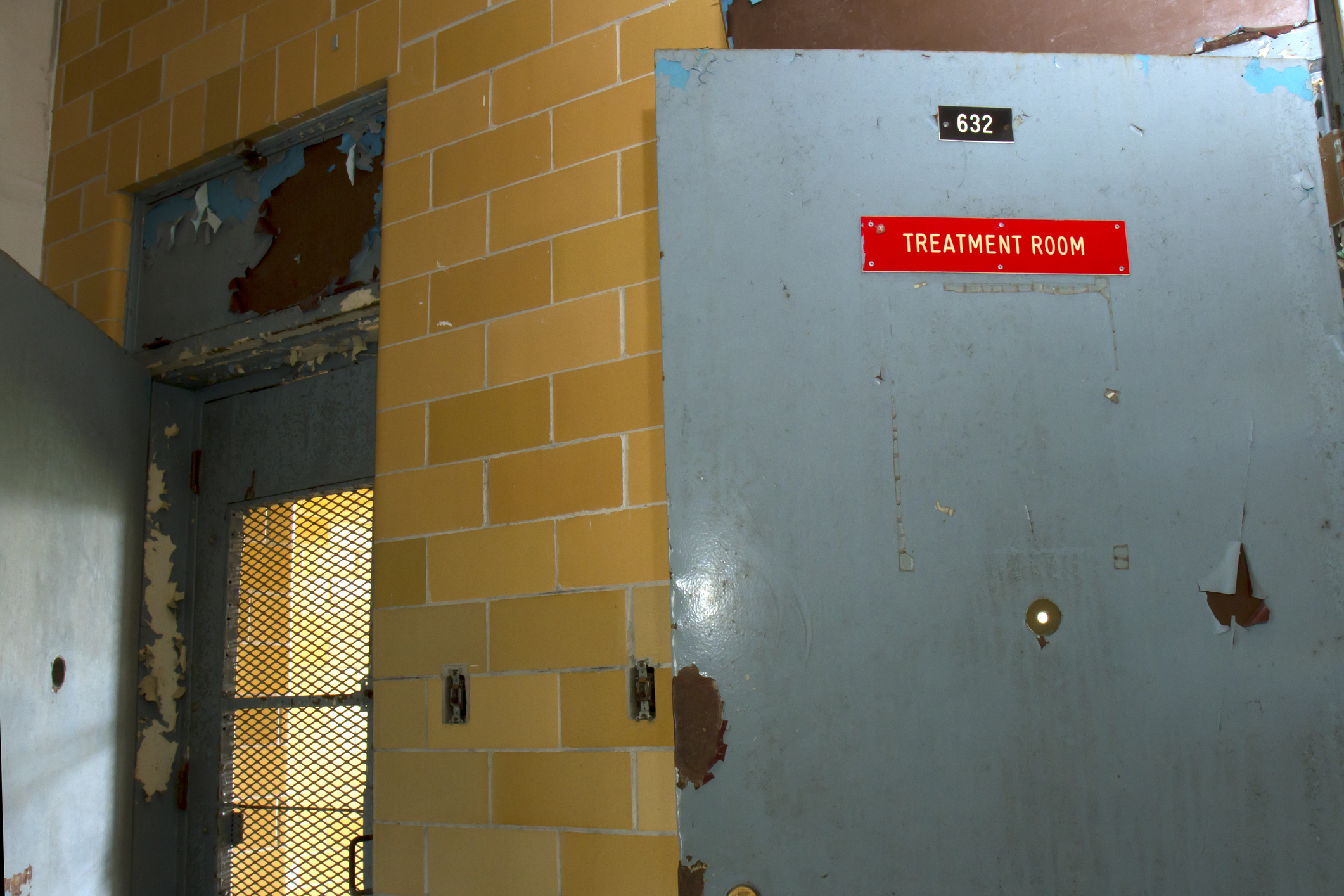The activist Mariame Kaba famously describes jails and prisons as “death-making institutions.” She means this literally: The incarceration apparatus is designed to promote premature mortality. Throughout the COVID-19 pandemic, jails and prisons have been the loci of some of the largest viral outbreaks in the country, a fresh reminder that incarceration creates conditions for rampant infectious disease transmission — a lesson we’d already learned time and again, through HIV and TB epidemics and annually during flu season. Correctional facilities are “epidemiologic pumps,” concentrating disease and then spreading it out to the surrounding community. Even prior to the pandemic, however, prisons and jails had long been sites where a person became statistically more likely to experience harm the minute they crossed the threshold.
Safety within facilities could be considered part of the question of whether prisons and jails make us safer, as Victoria Law ponders in the title of her recent book. But this isn’t the way the “safety” question is usually asked. We’ve long had the data to demonstrate that no, in fact, when it comes to the well-being of people who are detained by the state, incarceration itself puts their lives at risk. And disregarding safety inside to be a factor in the overall safety equation leaves us perpetually shocked at the results these institutions deliver.
We are both physicians who work in the New York City jail system. Between us we’ve taken care of hundreds of jail-detained people who were medically vulnerable or who had serious mental illness or substance-use disorders. We have also both devoted significant time in our careers to compassionate release work, the health-based legal advocacy required to divert someone who is seriously ill from jail incarceration. That the institutions where we deliver care should be considered “death-making” is deeply uncomfortable for us, but it is also illuminating. It makes our work feel simultaneously urgent and Sisyphean.
What does it mean to practice medicine in death-making institutions? Knowing that jails are fundamentally sites of harm, our work as physicians is best framed as harm reduction. Partly we try to prevent and mitigate the negative impact of illness in a population overburdened with health issues; partly we try to mitigate the negative impact of jail. At its best this means meeting people where they are to offer them sensitive, accessible health care. In some cases, patients get treatment they’ve long needed and long been denied in the community. We can diagnose and treat hepatitis C, for example, or take care of undermanaged high-blood pressure and diabetes. At its worst, though, the work is despairing. In these moments, it becomes bearing witness without being able to intervene effectively in the worst of what you see.
At its worst, the work of correctional medicine is despairing. In these moments, it becomes bearing witness without being able to intervene effectively in the worst of what you see.
Death in custody is always tragic, but some deaths in custody can be closely traced back to the fact of incarceration itself. In our work, we call these “jail-attributable deaths,” a concept that originated with our mentor, Dr. Homer Venters. Dr. Venters defines jail-attributable deaths as “those caused by actions taken inside the walls of the facility.” Jail-attributable mortality can serve as a gross measure of how the jail system is operating and how well it can maintain safety. The concept obviously does not capture other forms of morbidity, such as serious injury, disability, or hospitalization without death; nor does it capture the unmeasured experiences of staff facing high rates of violence — or the stress, moral injury, and trauma of incarceration itself. Still, a jail system with a high rate of jail-attributable deaths is self-evidently one where basic operations are failing. Driving down jail-attributable death can be part of the harm reduction work done by a health service in a correctional environment. But it cannot be carried solely by the health service, as these deaths, by definition, result at least in part from the structural aspects of jail that are under the jurisdiction of the security agency.
Examples of jail-attributable deaths include suicides related to jail incarceration where suicide watch was not effectively implemented; homicides that result from intensification of violence and conflict within the jail walls; and overdoses that result when people who use drugs have access to an unregulated drug supply or cannot access medications to treat opioid or other substance dependence. Deaths that result from medical disease may be jail-attributable if the correctional system’s interference or neglect resulted in misdiagnosis or delayed or inappropriate treatment.
Whether to consider COVID-19 deaths “jail-attributable” is an interesting question. On the one hand, there are properties of the virus that make it easy to catch and easy to die from; on the other, there are properties of a jail that make catching and dying from COVID-19 far more likely than might be true in other settings. The very first COVID-19 deaths in correctional facilities around the country, when testing was still scarce and relatively little was known about the virus, were perhaps not attributable to the jail setting. But decision makers’ unwillingness to decarcerate overcrowded institutions, even once we knew the virus was airborne, or their decision to delay vaccine mandates for staff working in these environments, may make late-pandemic COVID complications and deaths more clearly jail-attributable than those that arose in the first waves of the pandemic.
New York City’s jail mortality rates over the past half-decade are a case study in both the potential and the fragility of reform movements waged from the correctional health trenches. Between 2015 and 2019, the independent health authority that we work for, a city agency embedded in the city’s public health infrastructure, systematically pioneered various interventions to reduce the risk of in-custody mortality, and jail-attributable mortality specifically. These interventions were implemented against a backdrop of progressive reform in the New York City jail system, thanks largely to vigorous activist campaigns to Close Rikers, halt the use of solitary confinement, and decrease the jail population by diverting entire categories of offenses away from pretrial detention. The movement’s successes are reflected in several important outcomes, including that there were only three in-custody deaths in 2019 — among the lowest number of deaths of all the major jail systems in the country, and one of the lowest in the jail system’s history.
One health service initiative that significantly improved safety and likely decreased mortality in the jails was the expanded use of medication-assisted treatment for all interested patients who had an opioid-use disorder, regardless of legal circumstance. New York City has a long history of a successful methadone maintenance program. But limited data sharing and lack of access to opioid agonists in the New York state prison system had hampered the ability to prescribe methadone to jail patients who were likely to be sentenced to prison upstate. Efforts to liberalize prescribing of methadone and suboxone and to provide naloxone training for people who are detained and their loved ones proved to be effective death-prevention work both in jail and upon release. Our system had no overdose deaths in custody in the three years from 2018 to 2020.
Mental health treatment was also improved in multiple ways. Most notably, the jail eliminated solitary confinement for patients with serious mental illness and developed high-intensity treatment units. These units have high health staff-to-patient ratios, officers specially trained in de-escalation techniques who choose to work in these intense environments, and interdisciplinary teams similar to those that operate in inpatient psychiatric units.
Finally, medical care also improved. The jail implemented quality improvement initiatives in jail clinics, recruited strong clinician-leaders, and expanded use of electronic health records for population health management. Particular effort was devoted to managing conditions that are jail-prevalent but frequently stigmatized and undertreated. In the 1990s into the early 2000s, the jails routinely had more than 30 deaths a year, many due to infectious diseases such as HIV and hepatitis C. These deaths are now rare largely due to advances in therapies, but also in part due to a combination of improved testing, low-barrier access to treatment, adherence tracking, supportive counseling, better coordination with affiliated hospitals, and compassionate release efforts. This work prepared committed health staff to meet the challenge of the first wave of the COVID-19 pandemic, which hit Rikers before any other jail system in the country. We are continually inspired by our colleagues’ empathy and courage.
Then there are the deaths that occur in jail but are not attributable to the jail. These, too, are preventable: Non-jail-attributable, in-custody deaths can be prevented by initiatives to make people free before they die. In New York City there is a long history of correctional health physicians engaging in compassionate release advocacy on behalf of seriously ill patients upon request from attorneys, patients, and families. Over the past five years, we have expanded this practice to include proactive health-based legal advocacy by a team of clinicians, social workers, and reentry planners. This compassionate release work lives at an intersection of medical and legal decision-making, requiring physicians to become comfortable as advocates who can articulate why unfreedom is fundamentally counter-therapeutic.
Non-jail-attributable, in-custody deaths can be prevented by initiatives to make people free before they die.
Jails and prisons are, as heated officers will often remind civilian staff, the corrections department’s “house.” “You’re guests in our home,” goes the admonishment and warning when conflicts between officers and health staff arise. Corrections bears the responsibility for security and safety, including violence prevention and prevention of serious injury due to self-harm. Corrections is also responsible for all detainee movement, and for maintaining the minimum standards that jails are expected to meet with regards to cleanliness, nutrition, crowding, access to counsel and visitors, and access to the outdoors. When these standards break down, or when units are understaffed and movement is disrupted, things fall apart, and even a strong correctional health presence cannot compensate effectively. Such as when our patients are not brought to the clinic for their appointments, or to the hospital to get the testing we prescribe. Our efficacy as clinicians is compromised because our care becomes haphazard in its delivery.
This is what we’ve seen in New York City in 2021. The Department of Corrections, which was an effective and responsive partner early in the pandemic, has had a very public meltdown for various reasons over the past 18 months. The crisis has been well-documented and described by advocates, editorial boards, elected representatives, and the federal monitor overseeing the department’s use-of-force practices. The system has had 12 in-custody deaths so far this year, plus an additional two deaths related to serious self-harm in jail that occurred within days after the individuals involved were released. At least five of these deaths are believed to have been suicides. Suicide in jail is common: A recent report from the Bureau of Justice Statistics found that up to 35 percent of the jail deaths recorded in its survey were attributed to suicide. Many of those were found to have happened within seven days after jail intake, when people are maximally at risk. This was the case with Brandon Rodriguez, a 25-year-old man who committed suicide in the intake area at Rikers in August. Mr. Rodriguez’s mother now speaks at protests and city council hearings about the loss of her son, and tweets about her struggle to get his possessions back from the city bureaucracy that makes no special effort to assuage her pain.
A core tenet of social medicine, a field which has greatly influenced our careers, is that health and wellbeing are complex products of the social, political, economic, and environmental context within which a person exists. This approach is in many ways aligned with the field of public health and challenges the traditional individualism of medicine. Our medical students sometimes find it overwhelming to conceptualize “health” and “illness” on this broad scale.
Perhaps more than any other area of medicine, however, correctional medicine embodies the truth of social medicine both as a concept and a practice. Prisons and jails are human-made institutions: powered by systems rife with racial and economic biases, built with inorganic bars, blocks, and barbed wire, constrained by artificial scarcity, run each day under the threat of force and violence. These are the environments which, in their default state, contribute to individual and social illness. Having mitigated risk over years, we know that much of that damage can be averted. Harm reduction, however, doesn’t dismantle. It can, to a limited degree, enable. And it cannot turn oppression into care.
Unfreedom at the end of life, like unfreedom during birth, is oppression that diminishes our collective spirit and puts the patient involved at risk. No one should be born unfree; no one should die unfree. This is about more than symbolism, although it’s hard to picture starker examples of disregard for the dignity of life than to regularly subject people to being born or dying in chains. The beginning and the end of life are periods of intense vulnerability, connection, and meaning-making. They hold the potential for grief, reconciliation, and expressions of love. And they are periods where care for the body is critically needed, where tenderness is imperative. Even in the best of circumstances, incarceration makes tenderness nearly impossible.
When we ask people who are seriously ill what their highest priority is before they die, they consistently say that it is to be free.
An elderly patient who had recently been sentenced to significant prison time once said to one of us during an emotional clinical encounter, “I am going to die in prison, and no one there will know me, and no one outside will remember me.” All of the negative emotions associated with approaching one’s final days — fear, shame, guilt, anxiety, loneliness, regret — are also provoked and heightened by incarceration. When we ask people who are seriously ill what their highest priority is before they die, they consistently say that it is to be free. When we work to prevent death in custody, our true objective is to help people survive something terrible so that they might live to be free again in the future. That’s been harder to do recently — a lesson for us that even significant progress in correctional health can deteriorate to the point of tragedy when fragile jail reform is reversed, and the institution devolves to its baser function.
Image: iStock


